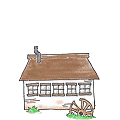
 2
2








 1
1




 2
2




 1
1




hans muster wrote:Interesting, and how do you imagine this could kill seeds?




Ian Påf wrote:As someone who has spent perhaps hundreds of hours removing invasive plants manually, I would absolutely consider using such a product. Especially on a homestead scale, it would be great to be able to use the biomass as mulch (etc.). I'm not familiar with cheatgrass, but I can offer some thoughts on invasive plant removal generally:
- Most of the invasives I've worked with regrow from roots, so if this device were to be effective against perennial plants, it would need to able to pull and kill the roots. I suppose this wouldn't a problem for annuals if you get them at the right time of year. Something to consider depending on what you want the scope of this device to be.
- Some invasives can also regrow from very small fragments (looking at you, knotweed), so chopping/grinding actually does more to spread the plant than to get rid of it. Again, not a problem for a lot of plants, so consider the scope of application.
- Removing invasive plants manually can be quite exhausting. If a device could make the task physically less demanding, that would be a huge benefit. In this case, that might look like incorporating a motor, or, if driven by hand, having large mechanical advantage
- I've also worked with some aquatic invasives (e.g., Phragmites, arundo). Again, a question of the scope of application, but being able to operate the device on wet ground/shallow water could open it up to use on these plants.




Phil Stevens wrote:I reckon the time to use it is before the seeds are viable. The flowering point is a good time to swoop in and annihilate plants that you don't want, because they've just put much of their energy into reproduction. You tend to maximise biomass this way, too, as lots of annual species start to drop their leaves after flowering.




Juan Ramirez wrote:For my machine It would be ideal to have already pulled out the plants so that you may just toss the insavie species into the grinder so that any remains that could regrow get crushed. In your opinion do you believe my machine should have some sort of feature that aids in pulling out the plants from their roots?

|
There will be plenty of time to discuss your objections when and if you return. The cargo is this tiny ad:
Rocket Mass Heater Resources Wiki
https://permies.com/w/rmh-resources
|


